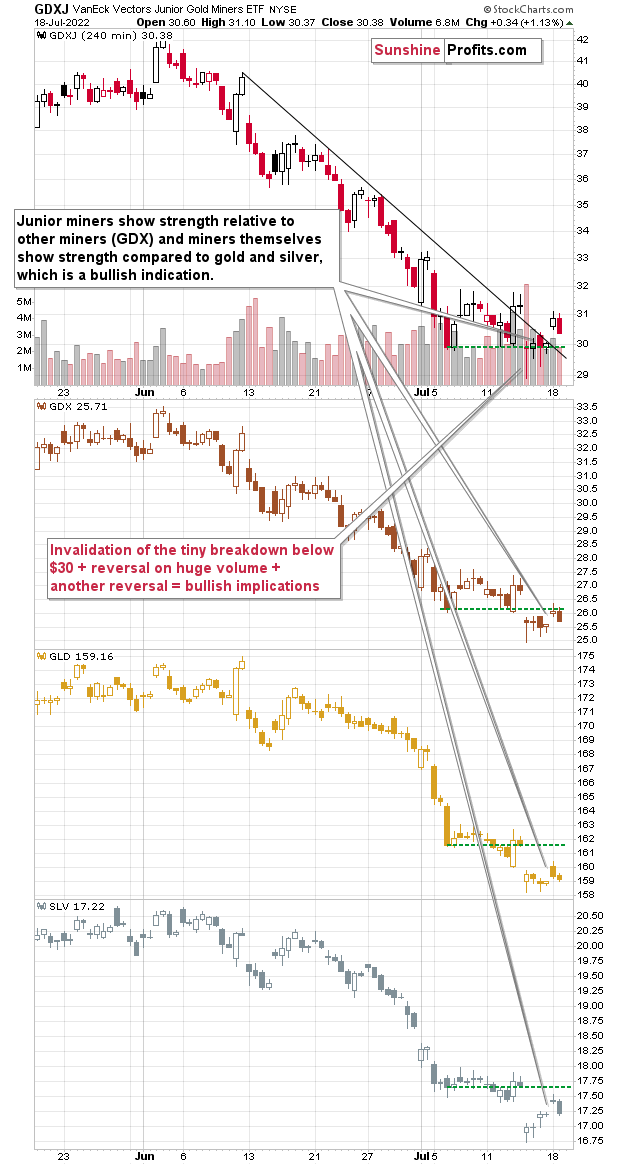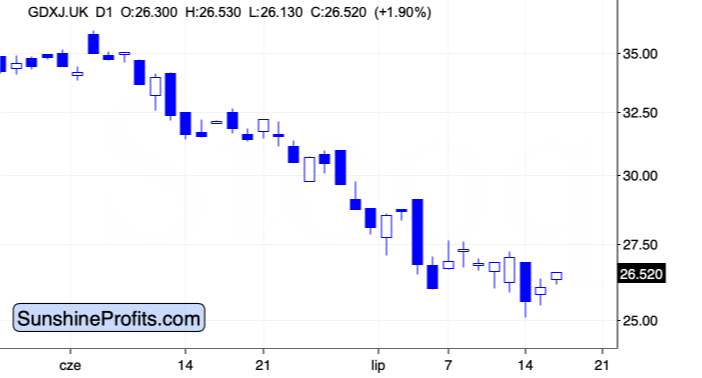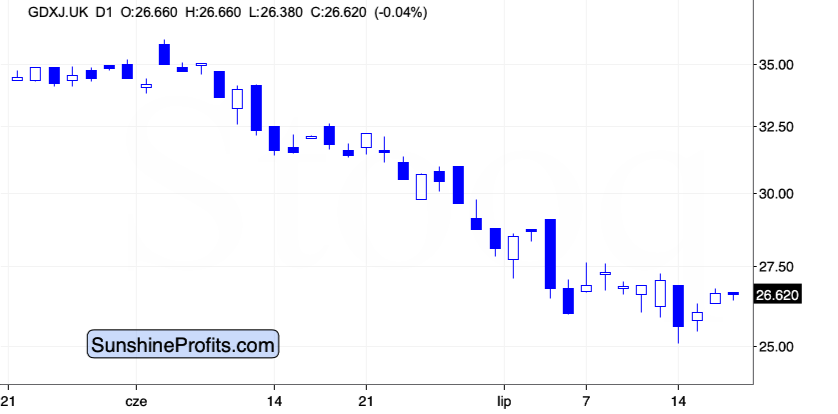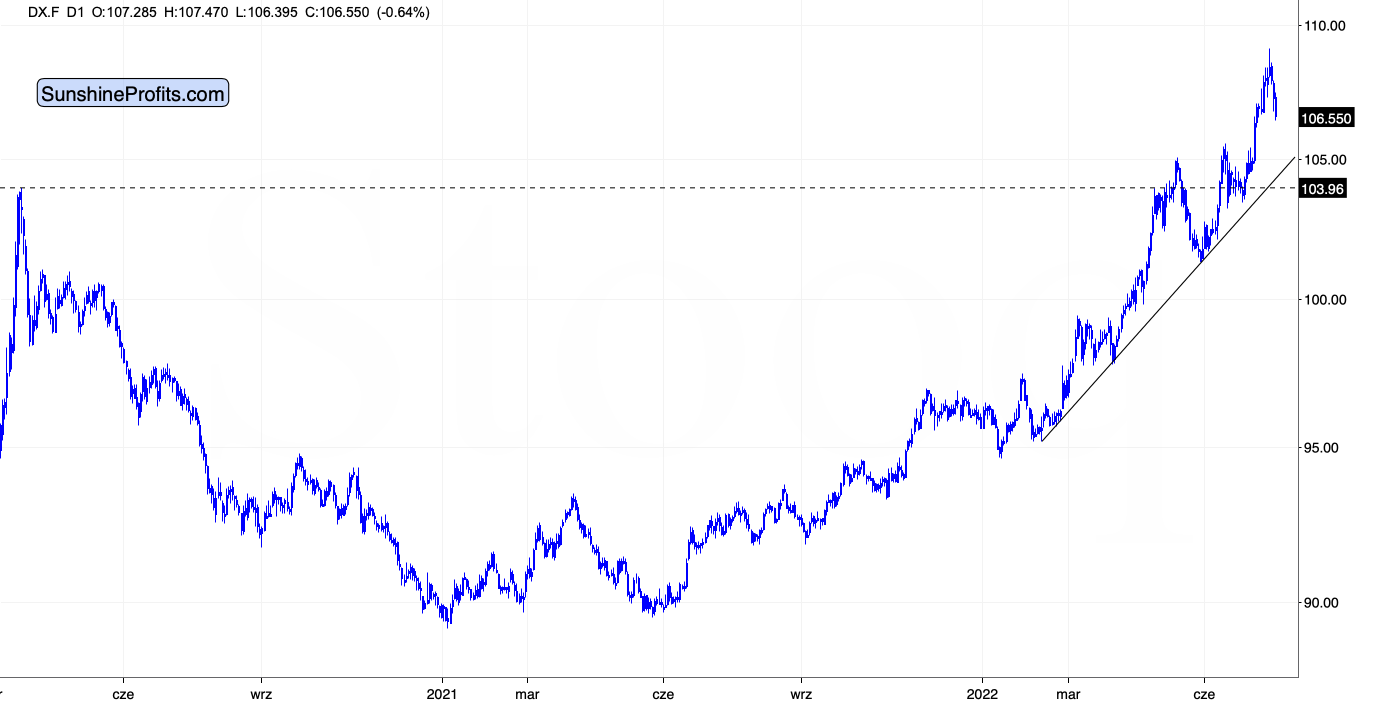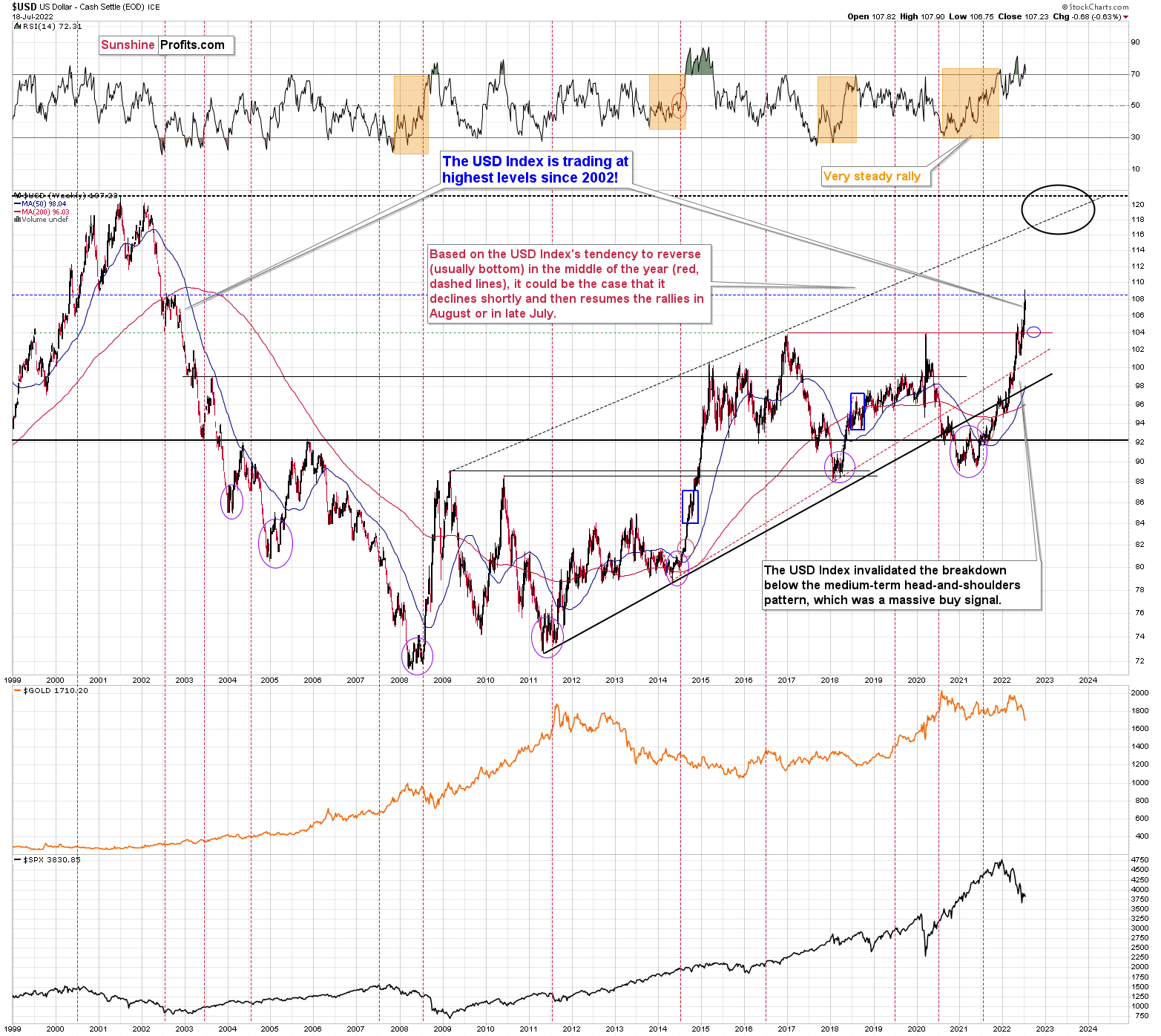Today’s technical analysis will be similar to yesterday’s, as we simply either saw a repeat of the previous indication or the situation developed in tune with them.
Let’s start with what I wrote yesterday about the chart featuring GDXJ (junior miners), GDX (senior miners), GLD, and SLV :
Gold, silver, and miners declined heavily in the past weeks, but it seems that they got too low, too fast, and now a quick rebound seems very likely.
On Friday, junior gold miners once again refused to decline below the $30 level, indicating that a rally was probable, which added to the list of bullish signals for the short term.
Interestingly, junior miners are now the strongest part of the precious metals sector (at least among its popular parts).
Junior miners (the GDXJ ETF) are the only ones of the above that just closed above their early-July lows. Senior miners (the GDX ETF) are only a little below their own early-July low, but gold (GLD) and silver (SLV) are much below their respective early-July lows.
Why would junior miners be so strong right now? One simple reason – because they had been so weak in the previous weeks. It’s not only a given market that usually (it’s almost always the case) doesn’t go up or down without periodic corrections, but one market’s relative performance to other markets.
So, what we see here, is not necessarily a reflection of junior miners’ “true strength,” but it’s just that since they have fallen the most, they are now bouncing more visibly. That’s likely it. Still, it seems that choosing junior mining stocks as a proxy for our current long position was a good idea.
Either way, the above chart provides us with one additional important detail.
The thing is that the GDXJ closed on Friday just a little below its declining short-term resistance line. The previous attempt to rally above it was invalidated, but given their relative strength, the recent reversals (one formed on huge volume), and the fact that GDXJ was quick to invalidate a tiny breakdown below $30, all suggest that a move higher is just around the corner.
In fact, looking at GDXJ’s [yesterday’s – that was posted on July 18] performance in today’s early London trading, it seems very likely that it will be able to break above the above-mentioned declining resistance line this time.
Indeed, the precious metals sector moved higher, and the GDXJ broke above its declining resistance line. When we saw something like that previously, it was immediately followed by another decline (and the breakout was invalidated), but we see signs that this time the breakout will be confirmed and then followed by another rally.
For example, even though gold is trading a bit lower than it was trading when I was preparing yesterday’s analysis, the GDXJ (in London trading) is a bit higher (as you can see on both above charts, it’s now 0.1 higher), so junior miners continue to show strength.
Additionally, the USD Index continues to decline in today’s pre-market trading.
This is in perfect tune with what I wrote previously – the USD reversed in a big way recently while reaching its long-term resistance.
Consequently, my previous comments on the above chart remain up-to-date:
The USD Index has quite likely formed a short-term top here, and it’s now likely to correct. How low would the USD Index be likely to move? Quite possibly to the 104 level or so, as that’s where we have very strong medium-term support. This support level is strengthened by the 1999 high (approximately), the 2002 low, the 2016 high, and the 2020 high – all very important highs.
Additionally, please note that the middle of the year is just around the corner, and that’s when the USD Index usually reverses, and it’s usually the case that those reversals are bottoms. I marked those cases with vertical red dashed lines. So, if the USD Index continues to correct here (and I think that it will), the decline might be rather short-lived.
All in all, it looks like the precious metals sector is going to rally and probably top close to the end of this month as the USD Index pulls back after a sizable rally.

